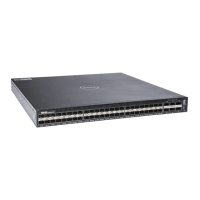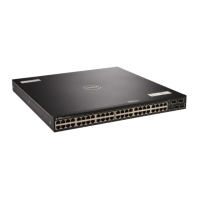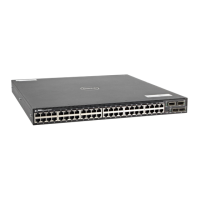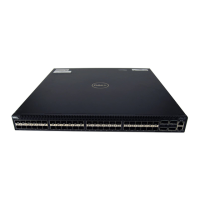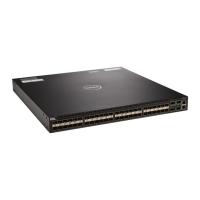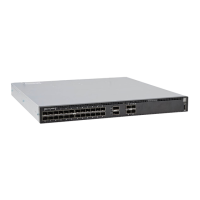Dynamic Mode CoS for VLAN Stacking
One of the ways to ensure quality of service for customer VLAN-tagged frames is to use the 802.1p priority
bits in the tag to indicate the level of QoS desired.
When an S-Tag is added to incoming customer frames, the 802.1p bits on the S-Tag may be configured
statically for each customer or derived from the C-Tag using Dynamic Mode CoS. Dynamic Mode CoS maps
the C-Tag 802.1p value to a S-Tag 802.1p value.
Figure 121. Statically and Dynamically Assigned dot1p for VLAN Stacking
When configuring Dynamic Mode CoS, you have two options:
• Mark the S-Tag dot1p and queue the frame according to the original C-Tag dot1p. In this case, you must
have other dot1p QoS configurations; this option is classic dot1p marking.
• Mark the S-Tag dot1p and queue the frame according to the S-Tag dot1p. For example, if frames with
C-Tag dot1p values 0, 6, and 7 are mapped to an S-Tag dot1p value 0, all such frames are sent to the
queue associated with the S-Tag 802.1p value 0. This option requires two different CAM entries, each in
a different Layer 2 ACL FP block.
NOTE: The ability to map incoming C-Tag dot1p to any S-Tag dot1p requires installing up to eight entries
in the Layer 2 QoS and Layer 2 ACL table for each configured customer VLAN. The scalability of this
feature is limited by the impact of the 1:8 expansion in these content addressable memory (CAM) tables.
Dell Networking OS Behavior: For Option A shown in the previous illustration, when there is a conflict
between the queue selected by Dynamic Mode CoS (vlan-stack dot1p-mapping) and a QoS configuration, the
queue selected by Dynamic Mode CoS takes precedence. However, rate policing for the queue is determined
by QoS configuration. For example, the following access-port configuration maps all traffic to Queue 0:
vlan-stack dot1p-mapping c-tag-dot1p 0-7 sp-tag-dot1p 1
However, if the following QoS configuration also exists on the interface, traffic is queued to Queue 0 but is
policed at 40Mbps (qos-policy-input for queue 3) because class-map "a" of Queue 3 also matches the
traffic. This is an expected behavior.
Examples of QoS Interface Configuration and Rate Policing
policy-map-input in layer2
service-queue 3 class-map a qos-policy 3
Service Provider Bridging 960
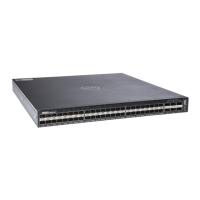
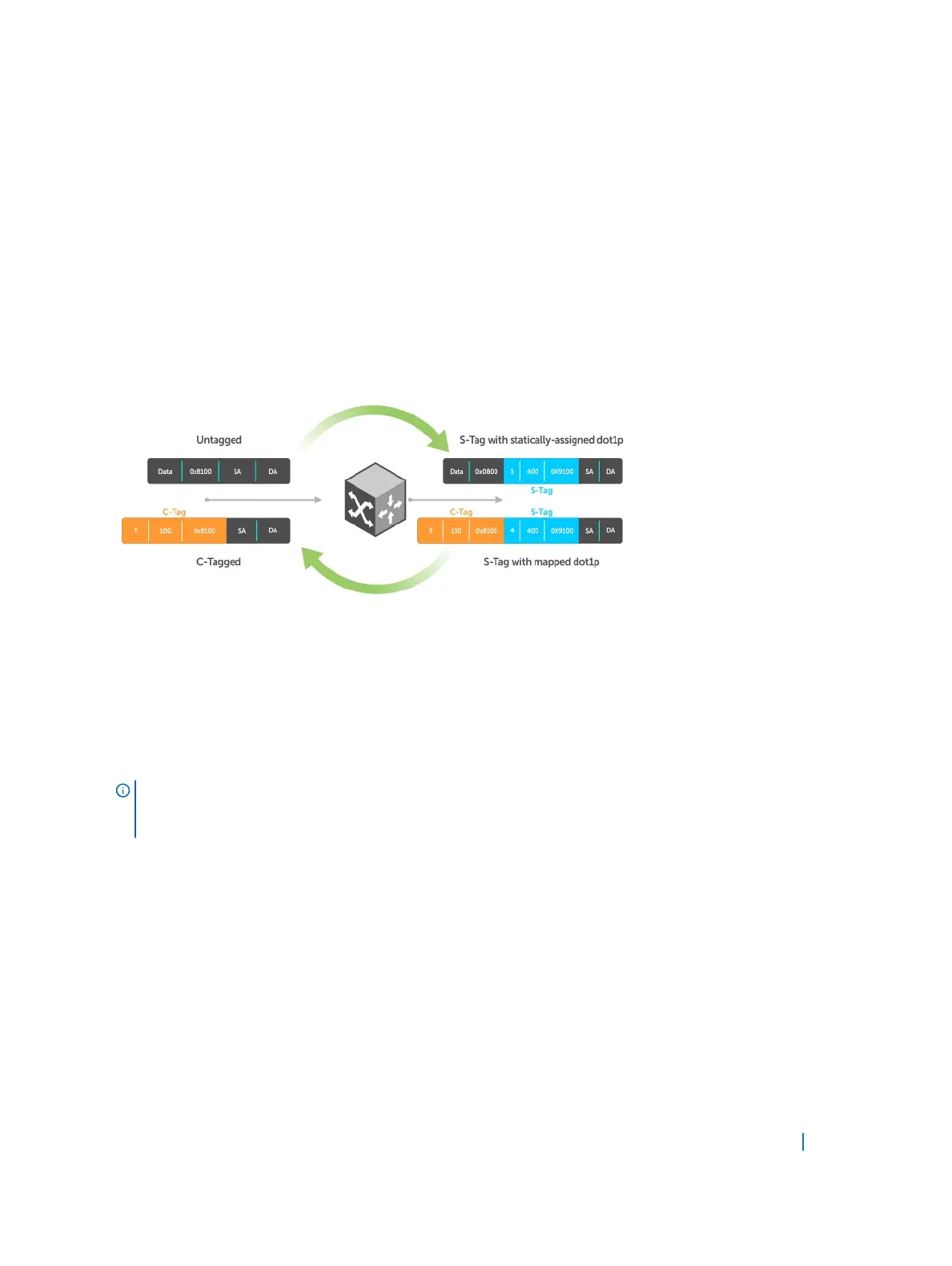